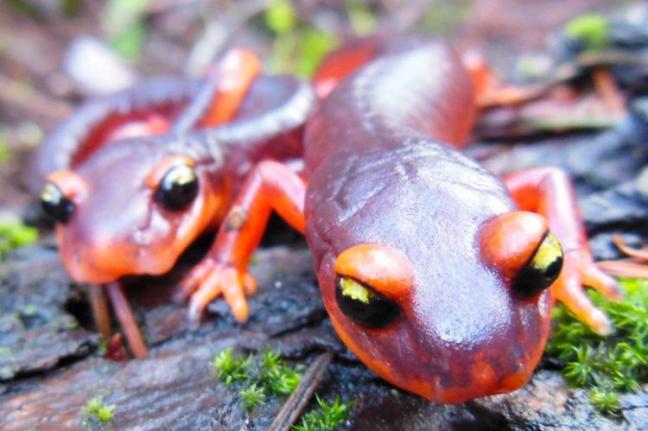-
Tips for becoming a good boxer - November 6, 2020
-
7 expert tips for making your hens night a memorable one - November 6, 2020
-
5 reasons to host your Christmas party on a cruise boat - November 6, 2020
-
What to do when you’re charged with a crime - November 6, 2020
-
Should you get one or multiple dogs? Here’s all you need to know - November 3, 2020
-
A Guide: How to Build Your Very Own Magic Mirror - February 14, 2019
-
Our Top Inspirational Baseball Stars - November 24, 2018
-
Five Tech Tools That Will Help You Turn Your Blog into a Business - November 24, 2018
-
How to Indulge on Vacation without Expanding Your Waist - November 9, 2018
-
5 Strategies for Businesses to Appeal to Today’s Increasingly Mobile-Crazed Customers - November 9, 2018
Foreign Fungus Threatens US Salamanders
Researchers have stated that a newly discovered fungus from Asia could wipe off salamander species.
Advertisement
The deadly fungus known as Batrachochytrium salamandrivorans, or Bsal, is very similar to another fungus called Batrachochytrium dendrobatidis or Bd.
Regarding to the Bsal fungus, it could be especially deadly in the areas where there’s larger amount of salamanders.
Earlier this spring, scientists with the Center for Biological Diversity also started an online petition pressuring federal officials to take steps to prevent the fungus from infecting amphibians in the United States. From 2010 through 2014, all U.S. ports combined received more than 768,000 live salamanders either native to Asia or shipped through an Asian port. The most, about 419,000, arrived in Los Angeles, followed by 272,000 in Tampa, Fla.
But previous efforts to ban the import of live salamanders have failed, and there are concerns that authorities may not act quick enough to impose tighter controls or a ban on imports for the lucrative pet trade.
Despite ongoing attempts by scientists to lobby for a ban in the U.S., the government has been slow to respond, the researchers say.
“This is an imminent threat, and a place where policy could have a very positive effect”, study co-author Vance Vredenburg, a biologist at SFSU, said in a press release. In the event that B.sal. does makes its way onto American soil, the effects will be devastating and therefore it is necessary that the strictest measures be put into action in order to keep the spread of the disease at bay.
“So if major losses of salamanders occur, we could experience degradation of healthy ecosystems, which could lead to issues beyond where they occur now”.
He described the Bsal as an acute infection that turns salamander into little masses of lime in just three to four days. Studying habitats on the continent and salamander species richness, the researchers identified three high-risk zones for Bsal infections: the Southeast around the southern end of the Appalachian Mountains, the Pacific Northwest and the Sierra Nevada, and the highlands of Central Mexico.
He noted that salamanders play a crucial role in many North American ecosystems.
Advertisement
The eastern spotted newt (Notophthalmus viridescens) has the most expansive range in eastern North America and can be found in 34 U.S. states and five Canadian provinces. Bd, which in some regions has killed as many as 40% of amphibian species, offs its victims by hardening the animals’ skin, interfering with their electrolyte regulation and ultimately causing cardiac arrest. They are also an important food source for larger predators, such as birds, mammals, and snakes.




























